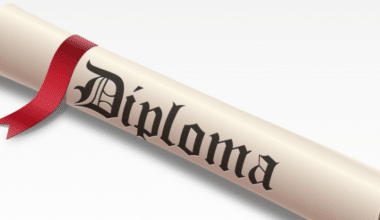Baking soda, or sodium bicarbonate, is a versatile and inexpensive household item that goes beyond its role in the kitchen. While it’s commonly used in baking to make cakes rise, this humble white powder has a plethora of other surprising and practical applications.
From cleaning and personal care to health remedies, here in this article are 20 amazing uses for baking soda that will make you appreciate its versatility. Follow through!
Table of contents
What is Baking Soda?
Baking soda, scientifically known as sodium bicarbonate, is a white crystalline powder that is commonly used in cooking, cleaning, and various household applications.
Chemically, it is a compound composed of sodium, hydrogen, carbon, and oxygen, with the chemical formula NaHCO3.
How is Baking Soda Made?
Baking soda, or sodium bicarbonate (NaHCO3), is primarily produced through a chemical process known as the Solvay process. The production involves several steps, starting with the extraction of sodium chloride (table salt) and ammonia.
Here’s a simplified overview of the manufacturing process for baking soda:
Ammonia Recovery Tower
- Ammonia (NH3) and carbon dioxide (CO2) are introduced into a tower filled with brine (a concentrated solution of sodium chloride or table salt).
- In this tower, ammonium bicarbonate (NH4HCO3) forms as a result of the chemical reaction between ammonia and carbon dioxide in the presence of water:
NH3+CO2+H2O→NH4HCO3
Precipitation of Sodium Bicarbonate
- The solution from the ammonia recovery tower, containing ammonium bicarbonate, is then mixed with sodium chloride (NaCl) to form sodium bicarbonate (NaHCO3) and ammonium chloride (NH4Cl): NaCl+NH4HCO3→NaHCO3+NH4Cl
- Sodium bicarbonate is only slightly soluble in water and precipitates out as a solid.
Filtration
- The solid sodium bicarbonate is separated from the solution by filtration.
Formation of Sodium Carbonate
- The separated sodium bicarbonate is then treated with carbon dioxide gas to form sodium carbonate (Na2CO3) and water: 2NaHCO3+CO2→Na2CO3+H2O+CO2
- The carbon dioxide produced in this reaction is recycled back into the ammonia recovery tower.
Ammonium Chloride Recovery
- The remaining solution from the initial reaction, which contains ammonium chloride (NH4Cl), is then treated with lime (calcium hydroxide – Ca(OH)2) to produce ammonia and calcium chloride (CaCl2): 2NH4Cl+Ca(OH)2→2NH3+2H2O+CaCl2
- The ammonia produced is sent back to the ammonia recovery tower for reuse.
Crystallization and Separation
- The calcium chloride byproduct is removed through crystallization, leaving behind a solution of ammonia.
- The remaining solution is then mixed with carbon dioxide, resulting in the formation of solid ammonium bicarbonate: NH3+CO2+H2O→NH4HCO3
- Ammonium bicarbonate is then separated and used in the ammonia recovery tower.
Final Sodium Bicarbonate Formation
- The remaining solution containing ammonium bicarbonate is mixed with carbon dioxide to produce sodium bicarbonate, and the ammonia is recovered for reuse in the process.
Drying and Packaging
- The final sodium bicarbonate product is dried and packaged for commercial use.
Related Article: 10 Benefits of Front Load Washers and Dryers
20 Uses for Baking Soda
This household staple is not only a common ingredient in baking but also boasts a wide array of practical applications due to its unique chemical properties. Here are 20 beautiful things you can use baking soda for around and outside your home.
In the Bathroom
- Toilet Bowl Cleaner: Sprinkle baking soda inside the toilet bowl and scrub with a toilet brush. It helps remove stains, neutralizes odors, and leaves the bowl fresh.
- Sink and Faucet Cleaner: Sprinkle baking soda on bathroom sinks and faucets, then scrub with a damp sponge. It not only cleans but also polishes the surfaces.
- Clogged Drain Treatment: Use baking soda to unclog drains. Pour a mixture of baking soda and vinegar down the drain, followed by hot water. This can help break down debris and eliminate odors.
- Mirror and Glass Cleaner: Create a cleaning solution by mixing baking soda with water to clean bathroom mirrors and glass surfaces. Wipe clean for a streak-free shine.
- Showerhead Descaler: Remove mineral deposits from the showerhead by soaking it in a mixture of baking soda and vinegar. This helps improve water flow and prevent clogs.
In the Kitchen
Baking soda is a versatile kitchen staple that goes beyond its role as a leavening agent in baking. It’s an effective and affordable multipurpose tool for various kitchen tasks. Here are some of the best uses for baking soda in the kitchen
- Leavening Agent: Baking soda is a key ingredient in baking, where it reacts with acidic components to produce carbon dioxide, causing baked goods to rise.
- Deodorizing the Refrigerator: Place an open box of baking soda in the refrigerator to absorb and neutralize food odors. Replace it every few months for maximum effectiveness.
- Polishing Stainless Steel Appliances: Create a paste with baking soda and water to polish stainless steel appliances. It helps remove stains and restore shine.
- Cleaning Greasy Pans and Utensils: Make a paste with baking soda and water to scrub greasy pans and utensils. Its mild abrasive nature helps cut through grease.
- Homemade Sports Drink: Mix baking soda with water, salt, and a bit of sugar for a DIY sports drink. It can help replenish electrolytes after physical activity.
- Tenderizing Meat: Baking soda can be used as a meat tenderizer. Sprinkle a small amount on tougher cuts of meat and let it sit for a while before cooking. Rinse thoroughly before cooking to remove any residue.
- Boiled Eggs: Add a pinch of baking soda to the water when boiling eggs to make them easier to peel. It helps to raise the pH of the egg whites, making the shells less likely to adhere.
- Reducing Cooking Time for Legumes: Adding a pinch of baking soda to the water when cooking dried legumes can reduce the cooking time and make them more tender.
- Neutralizing Over-Salting: If a dish becomes too salty, adding a small amount of baking soda can help neutralize the excess saltiness. Use sparingly and taste frequently.
On Clothing
Baking soda, with its natural cleaning and deodorizing properties, can be a valuable addition to your laundry routine. Here are some of the best uses for baking soda on clothing:
- Stain Removal: Create a paste by mixing baking soda with water and applying it to stained areas on clothing. Allow it to sit for a short period before laundering to help lift and remove stains.
- Removing Sweat Odors: For clothes with persistent sweat odors, soak them in a solution of water and baking soda before washing. This can help eliminate the odor-causing bacteria.
- Brightening Whites: Add baking soda to the wash when laundering white clothes to help brighten and whiten them. It can also aid in removing yellowing.
- Cleaning Washing Machine: Run an empty load with baking soda to clean and deodorize your washing machine. This helps remove any residual detergent and keeps your machine fresh.
- Removing Musty Smells: Clothes that have been stored for a while may develop musty odors. Sprinkle baking soda on them before washing them to help eliminate the musty smell.
- DIY Fabric Freshener: Mix water and baking soda in a spray bottle to create a DIY fabric freshener. Lightly mist clothes to refresh them between washes.
In the Car
Baking soda can be a handy and versatile product for various tasks in and around your car. Here are some of the best uses for baking soda in your car:
- Air Freshener: Place an open box of baking soda under the seats or in the trunk to absorb and neutralize unwanted odors.
- Removing Odors from Floor Mats: Sprinkle baking soda on floor mats to absorb odors. Let it sit for some time before brushing or vacuuming away.
- Cleaning Battery Terminals: Mix baking soda with water to create a paste and use it to clean battery terminals. This helps remove corrosion.
- DIY Car Freshener: Make a DIY air freshener by placing baking soda in a breathable container and hanging it from the rearview mirror.
For Health
It’s important to note that while baking soda can be beneficial for certain purposes, here are some potential uses for baking soda in health:
- Heartburn and Indigestion Relief: Baking soda can act as an antacid, neutralizing excess stomach acid. A small amount dissolved in water may provide relief from heartburn and indigestion.
- Oral Care: Baking soda can be used as a mild abrasive toothpaste to help whiten teeth and remove stains. However, it should be used in moderation to avoid damaging tooth enamel.
- Relief from Itchy Skin and Bug Bites: A paste made from baking soda and water can be applied topically to soothe itching from insect bites, rashes, or sunburn.
- Exfoliant for Skin: Baking soda can be used as a gentle exfoliant for the skin. When mixed with water, it forms a paste that can help remove dead skin cells.
Read: How Does Dehumidifiers Work?
FAQs
Yes, baking soda is gentle and can be used to clean glass surfaces. Mix it with water to form a paste for scrubbing or use it as an ingredient in a DIY glass cleaner.
Some people use baking soda as a natural deodorant. It can help neutralize odors, but it may cause irritation for some individuals. Consider testing a small area before widespread use.
Baking soda can be used on small grease fires. Sprinkle it on the flames to release carbon dioxide, which helps smother the fire.
Baking soda can be abrasive, so it’s important to be cautious when using it on sensitive skin. It’s advisable to test a small area first and dilute it with water when using it on the skin.
Conclusion
Baking soda’s versatility extends far beyond the kitchen, making it a valuable and cost-effective addition to your household. From personal care to cleaning solutions, this simple white powder has earned its reputation as a multipurpose wonder. So, the next time you reach for that box of baking soda, remember that its uses go far beyond baking cookies or cakes.
References
- Almanac.com – The Best Uses for Baking Soda
- Home.howstuffworks.com – Surprising Baking Soda Uses
- Healthline.com – Benefits and Uses of Baking Soda





